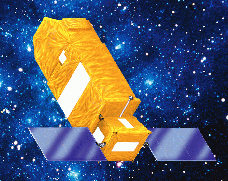

Mission Status Report #52 Star Date: December 14, 2001
The Ecstasy and the AgonyCaption: The life of a satellite can be complicated, and one has to take the bad with the good. We have some of both for you in the report below. FUSE has completed a spectacular second year of official science operations, but we are currently experiencing an anomaly. (See below for details.) (Click image above to see larger version.)
More information on Reaction Wheels (Added Dec. 29, 2001) Hello World, November 30th marked the end of the second full year of science operations with the FUSE satellite. And what a year it was! We are still compiling statistics for the last year, but the overview looks like this:
Even these numbers just scratch the surface, because in addition to "quantity", it is the "quality" that counts. Scientists are using FUSE data to perform a dazzling array of frontline science programs, and the results are starting to appear more rapidly now. (See our Science Summaries page for non-technical write-ups of some recent results, and our Publications page for links to on-line technical papers.) There are many more results on the way, with over 50 FUSE-related presentations scheduled for the January American Astronomical Society meeting in Washington, DC! Unfortunately, the "ecstasy" on the science side is tempered by "agony" on the operations side. We have currently suspended science operations with FUSE as of Monday Dec. 10, 2001 while we troubleshoot an ongoing problem with our reaction wheels. These mechanisms, also known as "momentum wheels," are used for positioning and stabilizing the satellite. There are four such wheels on FUSE and normally having any three operating is sufficient to maintain full control. We have had some difficulties earlier with the reaction wheels (see previous Status reports #42, #43, and #36), but have been able to fix these earlier problems with minimal lost time. Our current situation appears to be more difficult. (I say "appears" only because the situation can change so rapidly.) On November 25th, one of the four reaction wheels experienced a friction event and stopped turning. Attempts to get it spinning again were unsuccessful and we continued science operations with three wheels. On Monday, Dec. 10th, a second reaction wheel shut down, leaving us with only two operational reaction wheels, and thus no control in one axis of motion on the spacecraft. If there is good news, it is that our current configuration is in a safe attitude that keeps our solar panels turned toward the sun at all times. We can stay in this mode indefinitely while we continue to troubleshoot the problem. In the event that one of the two errant reaction wheels cannot be restarted, we are already assessing the options for controlling the attitude with other mechanisms on the spacecraft. Early work in this direction looks optimistic. I will of course post updates as conditions warrant.
Reported by: Bill Blair, Chief of Observatory Operations
|
